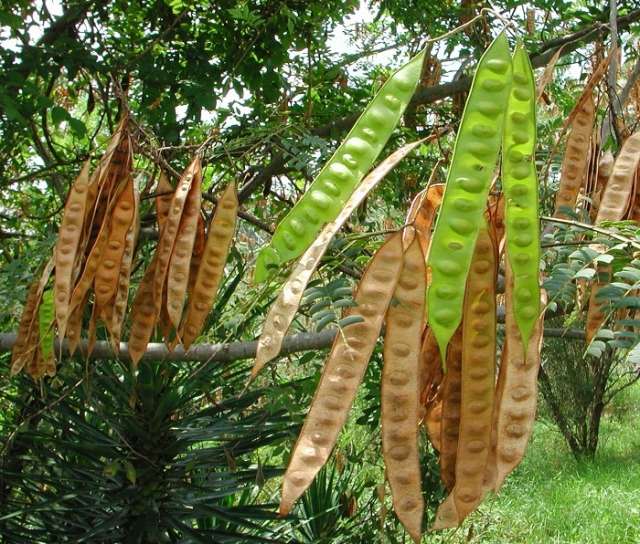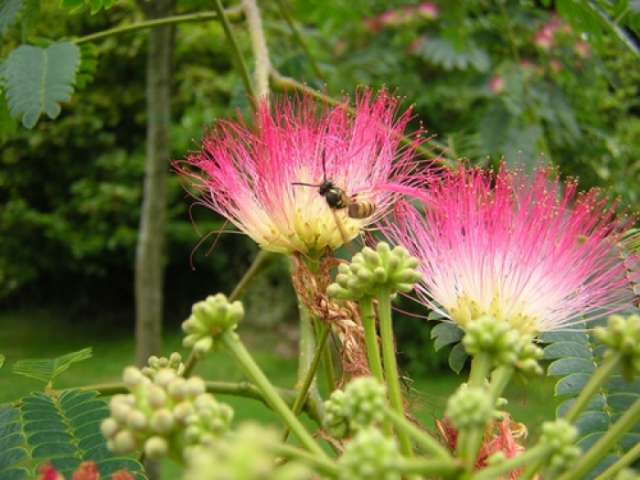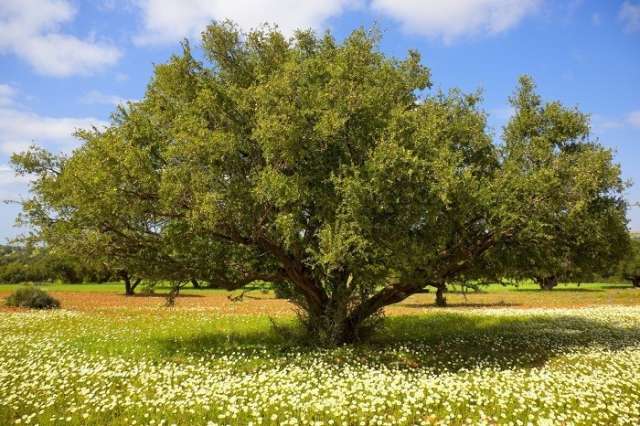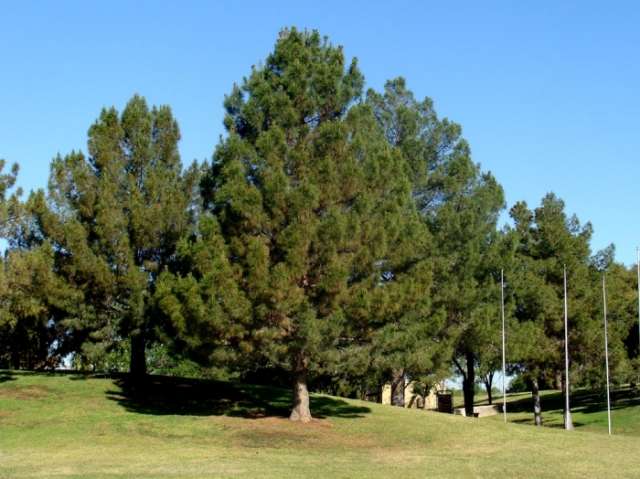These majestic trees are to be found in the Hyrcanian (Hirkan) Forest in the south of Azerbaijan. Their decorative leaves, large crowns and strong trunks have attracted the attention of naturalists, botanists and gardeners from around the world for centuries. Paradoxically, however, many aspects of their distribution patterns and ecology are still not well understood.
Rare and irreplaceable
Despite their continued existence over an enormous geological time span, today, only a handful of each highly threatened species remains. Recent unprecedented and rapid global transformation, specifically demographic and climatic changes, could irreversibly threaten the survival of these unique trees. Conservation of this significant evolutionary heritage for future generations requires targeted action to prevent detrimental human activity.
Relict trees are not only valuable from a scientific point of view; they also contribute to human welfare and can play a significant role in the economy in forestry and timber cutting, paper production and construction. Their wood is valued by local communities in the manufacture of traditional furniture, decorative items and other craft work. Furthermore, they can be planted to stabilise slopes against erosion and landslides. Some species have natural healing properties used in both traditional and modern medicine, and in the detoxification of soil and water.

Fruit of the Persian Ironwood. Photo: Emanuel Gerber
Hyrcanian Forest
The Hyrcanian Forest follows the south-western and southern coasts of the Caspian Sea. There, it forms a narrow, arching region of forest that extends from south-eastern Azerbaijan across the south and then eastwards as far as the Golestan Province of Iran. Since the original forests of the coastal plains were almost completely cleared due to intensive farming, the modern day range of this unique forest community is limited to the north-eastern slopes of the Talysh Mountains and the northern slopes of the Elburz Mountains.
Fossil records attest to the fact that Hyrcanian is a descendant of forest communities that were widespread throughout the northern hemisphere during the Miocene, a geological era between 23 and 5.3 million years ago, but whose range significantly retreated during the climate change that occurred during the glacial Pleistocene period. The Hyrcanian Forest owes its survival to the special climate of the southern Caspian region, and the relatively mild humidity it enjoyed even during the Ice Age.
Portraits of Three of the Emblematic Relict Trees of Azerbaijan
Velvet Maple (Acer velutinum) – a record-breaking maple
The Velvet Maple is the largest maple tree in the world. Typically it does not grow taller than 20 to 25 metres, but some trees can reach a height of more than 60 metres. Near the village of Siyov in the Talysh Mountains, there is a multi-stemmed giant that is 52 metres tall with a crown diameter of 32 metres and a circumference at breast height of 930 centimetres. The Velvet Maple also has a record leaf size and is exceeded only by the Oregon Maple (Acer macrophyllum) native to north-western North America. As the Velvet Maple tends to develop heart rot, the trunks of larger and older trees are generally hollow.

Fruit of Persian Silk Tree (Albizia julibrissin). Photo: Evelyne Kozlowski
The main range of the Velvet Maple includes the Hyrcanian Forests of Azerbaijan and Iran, from the Talysh Mountains and Lenkeran (Lankaran) as far as the province of Golestan. In addition, there are a few known specimens in the eastern Greater Caucasus Mountains (e.g. in Sheki and Quba regions in northern Azerbaijan).
The Velvet Maple prefers moist, deep soils on hillsides and in ravines, from the lowlands up to 1800 metres above sea level. Within the forest, it grows as a single tree or in small clusters alongside other tree species. However, in open sites such as the forest edge or clearings, the fast-growing and light-hungry young Velvet Maples have the advantage over competitor species and often thrive there in greater numbers.
Persian Ironwood (Parrotia persica) – a classic relict tree species
The Persian Ironwood is undoubtedly one of the most noteworthy relict tree species of the Hyrcanian Forests. Its range extends along a narrow strip on the southern coast of the Caspian Sea from the Talysh Mountains in Azerbaijan as far as the Iranian province of Golestan. Another smaller natural area of occurrence is located in the south-east of the Greater Caucasus Mountains in Azerbaijan.
The Persian Ironwood is still common within its range and may even form pure stands (areas where the species comprises more than 80% of the total tree population). Mostly as a result of its attractive autumn foliage colours, it was cultivated as early as the first half of the 19th century. Today, mature specimens are found adorning many parks and gardens of Europe and North America.

Flower of Persian Silk Tree (Albizia julibrissin). Photo: Emanuel Gerber
The Persian Ironwood is a species of the lowlands, growing best at an elevation between 250 and 400 metres above sea level. Despite its preference for warm and rather shady sites with damp, deep and nutrient-rich soils, it also tolerates less favourable climatic conditions and soil, and in the Talysh Mountains grows as single small trees at elevations of 1,200 metres and more. In the Elburz Mountains in Iran, the species is even found at elevations above 1,400 metres. In autumn, the foliage of the Persian Ironwood develops a magnificent yellow, orange and purple assortment of colours, making the Hyrcanian Forest more eye-catching than ever.
Caucasian Zelkova (Zelkova carpinifolia) – Stately and long-lived
The greatest occurrence of Caucasian Zelkova is found in the Hyrcanian Forests and in west Georgia. There is also a limited number of smaller, isolated sites in north-west and east Georgia, in southern Azerbaijan, in eastern Turkey and in western Iran. This disjointed pattern of distribution indicates that 6,000 to 5,500 years ago, forests with Caucasian Zelkova were more widespread in the South Caucasus than they are today.
The light- and heat-loving Caucasian Zelkova enjoys fresh, not-too-wet soil that is rich in humus (organic, mature, top soil) and lower-lying sites, where it can attain a trunk diameter of two to three metres and a height of 40 metres. Not only does the species grow large, it is long-lived too. Some specimens in the Talysh Mountains are 800 to 850 years old.
In the Hyrcanian Forest region, the Caucasian Zelkova has an elevational range from the South Caspian lowlands up to 1,500 metres above sea level. It exists in pure stands or is found as a component of mixed deciduous forests with varying composition including species such as Velvet Maple, Chestnut-leaved Oak, Persian Silk Tree, Persian Ironwood or the Caspian Locust.
The Top Ten – the most emblematic relict trees of Azerbaijan:
Cappadocian Maple (Acer cappadocicum)
Velvet Maple (Acer velutinum)
Persian Silk Tree (Albizia julibrissin)
Caucasian Alder (Alnus subcordata)
Caucasian Persimmon (Diospyros lotus)
Caspian Locust (Gleditsia caspica)
Persian Ironwood (Parrotia persica)
Caucasian Wingnut (Pterocarya fraxinifolia)
Chestnut-leaved Oak (Quercus castaneifolia)
Caucasian Zelkova (Zelkova carpinifolia)
The International and Interdisciplinary Project Zelkova
In 2010, the Botanic Garden of the University of Fribourg (Switzerland) together with the Natural History Museum Fribourg and Botanic Gardens Conservation International (United Kingdom) started the interdisciplinary Project Zelkova. Through this initiative, as much information as possible about the six known species of Zelkova is being compiled and evaluated, incorporating a range of other scientific institutions. The goal of this endeavour is to develop a comprehensive action plan to preserve this globally endangered relict tree. The project has three parts: 1) Evaluation of the conservation status of the individual species and surveying the specimens found in cultivation; 2) scientific studies of Zelkova to understand their phylogenetics, biogeography and population genetics; 3) informing and sensitising the public, for example with exhibitions, as well as the exchange of knowledge and experience at national or international symposia.

Fruit of Caspian Locust (Gleditsia caspica). Photo: Evelyne Kozlowski
Exhibition Green Treasure of Azerbaijan – Encounters with an ancient natural heritage
The first thematic exhibition on relict trees of the Hyrcanian Forest in the Talysh Mountains of Azerbaijan opened on 2 May 2014 at the Azerbaijan National Academy of Sciences, in Baku. This international exhibition project is collaboration between the Botanic Garden of the University of Fribourg, the Natural History Museum of Fribourg, the Institute of Botany of the Azerbaijan National Academy of Sciences, Botanic Gardens Conservation International and Design NG Tornay Graphic and Communication, Fribourg.
The Argan Tree

The argan tree growing in the south region of Azerbaijan is one of the rare gems of the Azerbaijan soil. It is very interesting that the a piece of this tree neither burns in the fire nor sinks. It is impossible to drive a nail into this tree either. Duration of life of the tree growing in the Talysh woods is more than 200 years. Another wonder is that the branches of the tree merge while rubbing with each other. As the argan tree has a strong wood, it is generally used in telephone and electric posts, in the construction of bridges and in making some parts of cars and instruments.
Eldar pine

Eldar pine (Pinus eldarica) is an endemic tree that naturally grows only in Azerbaijan on the right bank of Gabirri river and in Elleroyugu mountain. In November 1910 on the proposal of countess K.S.Uvarova the territory of 3,5 thousand ha being the first preserved territory in the Caucasus where Eldar pine is spreaded, was declared a botanical conservation and preserved.
Kharibulbul (Ophrys caucasica)

It is a species of orchids. Kharibulbul is a rare endemic species in Azerbaijan and in the world. This plant is found in the territory of Karabakh. It is famous for its beauty.
Gregor Kozlowski is a professor at the University of Fribourg, scientific head at the Botanic Garden of Fribourg and conservator at the city’s Natural History Museum. His main research interests are biogeography and conservation biology of relict and endemic species.
Evelyne Kozlowski is a photographer at the Botanic Garden of the University of Fribourg and microscopy specialist at the University of Bern.
Source: Visions of Azerbaijan
Embassy of Azerbaijan to Austria, Slovenia, Slovakia
More about: #Azerbaijan














































